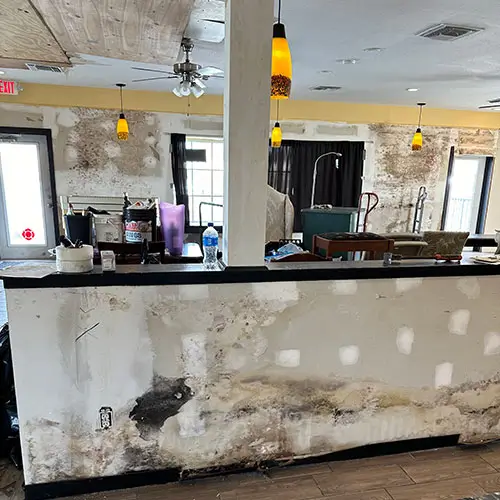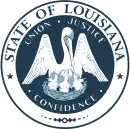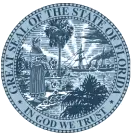Frequently Asked Questions
Disasters can leave you with questions, we have the answers
Customer FAQs
We understand that navigating through the aftermath of a disaster can be overwhelming and emotionally challenging. Let us alleviate your concerns and empower you with knowledge, so you can take confident steps toward rebuilding and restoring what matters most.
When water intrudes into a home or business, water damage restoration may be required. Water damage restoration is the professional process of removing unwanted water, drying and cleaning the structure and/or contents, and returning the property to its pre-loss condition. This is completed by professional technicians who are certified to follow industry standards using the proper methods and tools.
It may not be safe to stay in a flooded home or business. If you come into contact with or ingest flood water, it can make you sick if the water is contaminated. Standing water inside a structure that was inhabited also poses an electrocution risk, as appliances and electrical outlets can continue to be live and energized.
Water damage can be a serious situation. Water flowing through your home or business can carry with it any contaminants that it has come into contact with. Electrical hazards are common when water damage has occurred, so do not enter the area until it’s deemed safe.
Flood waters or contaminated water can also be a danger to anyone who comes into contact with it. It can be difficult to pinpoint what the water contains, and could have chemicals, dirt or bacteria within it. Additionally, depending on the severity of the water event, structural damage to the property could occur. Water damage may also make the area ripe for mold and mildew, which presents a danger to any occupants, as well.
Once water gets into walls, it starts deteriorating the wall structure and gradually gives way to the formation of mold colonies.
Mold formation is accompanied by a strong musty smell and additional mold spore generation which turns ubiquitous and starts infecting other possessions including dresses and furniture.
When a water loss occurs the water is designated to 1 of 3 categories defined below by the IICRC
Category 1. "Clean Water" is from a source that poses no substantial harm to people. Water that overflowed while running your bath water, leaking from a supply line for an ice maker, dishwasher or clothes washer are good examples. This assumes that the surfaces being flooded are reasonably clean. Flooding from clean water is usually treated by extracting standing water. Air movers are set up to create evaporation and dehumidifier's to remove the moisture from the air. After 48 hours, a Category 1 can become a Category 2.
Category 2. "Grey Water" poses health risks due to significant levels of contamination of bacteria, mold and/or chemicals. This includes dirty water from washing machines, dishwashers, as well as leaks from water beds, broken aquariums and urine. The water restoration technician should wear some personal protection equipment (PPE). The carpet padding is usually removed and replaced because its sponge-like structure offers the perfect environment for bacterial and mold growth. Due to rampant bacterial breeding and mold growth, Category 2 becomes a Category 3 situation if left untreated for 2 days or more.
Category 3. "Black Water" contains disease-causing organisms, toxins, and is grossly unsanitary. Typical black water conditions occur from a sewer back flow, a broken toilet bowl containing feces, and rising flood waters. (Wind driven rain from Hurricanes and Rising flood water is considered Category three because of the possibility of chemicals and organisms found in lawn chemicals, fertilizers, animal feces, decaying ground debris, and over filled sewer and septic systems.)
Tetanus and other serious diseases are likely to be present during catastrophic losses. Special care must be taken when dealing with Category 3 water and personal protection equipment must be used. Affected objects such as carpet, padding, and Sheetrock must be removed and disposed. Antimicrobials along with industry specific protocols must be used and followed prior to reentry into the structure to avoid serious health risks.
It varies from the type of property and the extent of water damage; we offer a free inspection and bill the insurance carrier for the water damage repairs.
Not necessarily- most damage appears after power is restored and the house begins to acclimate to relative humidity levels. Being quick may not be the best or provide the best assessment. Do not rush into the demolition phase completely and don’t be pressured by a mitigation company.
You should document internal and external damage thoroughly. Especially document roof damage or created openings from storm damage prior to closing up or tarping roof. If you did not take 100 pictures you didn’t take enough from every angle. Also, be sure to take pictures of all contents and rooms from multiple angles and designate all items that were affected by water or damage.
Public Adjustor and Attorney FAQs
When faced with property damage or environmental hazards, public adjusters and attorneys rely on remediation experts to assess and mitigate the issues effectively. By partnering with a reputable remediation company like Santi Clean, you can provide your clients with swift and thorough solutions, expediting the claims process and minimizing potential legal complications.
We are specialists in catastrophic loss and understand the intricacies of properly documenting and justifying a claim under specific protocols based on the loss. Our specialization in these areas create a basis that enable you to maneuver the claim more quickly and efficiently for your clients.
Santi Clean performs mitigation and remedial activities at the highest service level under the guidelines of IICRC, IAQA, CDC and EPA. We engage our relationships and partnerships with Environmental Scientists and Industrial Hygienists whenever necessary and employ the industry’s most competent and thorough technicians. Based on our past work and the feedback from Public Adjustors and Attorneys, we are their clear choice for their clients.
Our process from the initial contact with your client, site evaluation, photo documentation, Xactimate scope development for remedial activities, moisture mapping, demolition, drying and final Xactimate report submission create a concise case for the basis of the claim. Based on Industry Standards, work quality and documentation makes our work practically irrefutable for the carrier. In addition, our documentation ensures that your client gets credit for every square foot and linear foot of damaged materials for rebuild compensation.
Yes, quite often we receive requests to evaluate others' work and/or perform forensic analysis on the claim. This entails including work already performed and creating new discovery while documenting any improper or incomplete work product.
Please reach out to us directly on our contact page or call us at 404-723-0627. We welcome the opportunity to discuss how we can help with any current or future clients.
Choose Santi Clean for professional expertise, dedication, and a worry-free experience.
Reach out to Santi Clean today at 404-723-0627 to schedule a free consultation and get back in business after severe weather damage.
We’re Ready to Restore Your Home Or Business
Let’s Make a Disaster Only a Memory
We Respect Your Home & Your Time
Top Choice of Attorney’s & Public Adjusters
Navigate Insurance with Ease and Confidence
Comprehensive Training & Certifications
Copyright 2024 Santi Clean | Privacy Policy | Web Design & Development by Hughes Media



